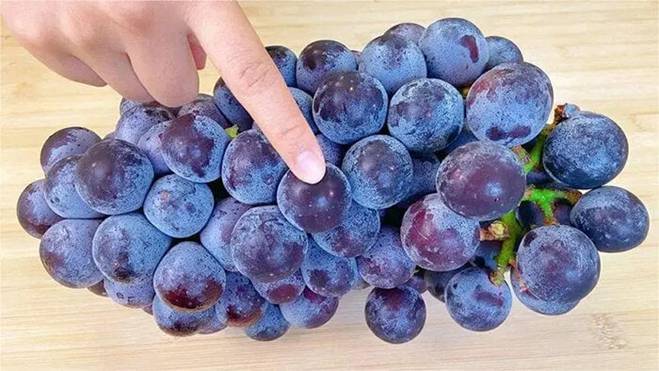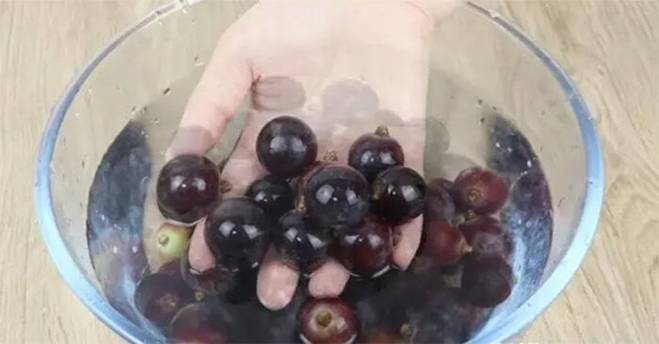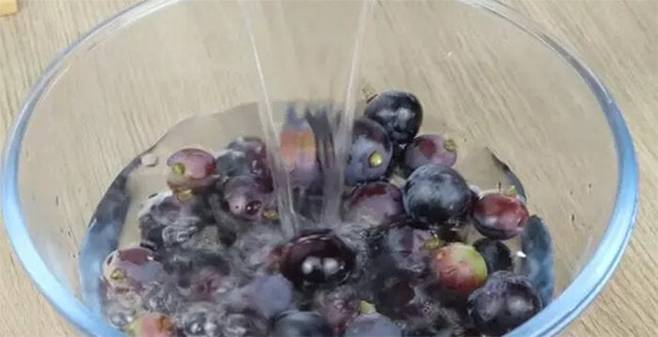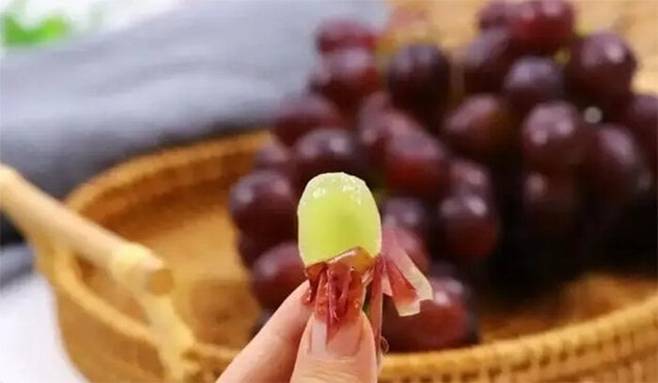Grapes are one of the most nutritious fruits around. They are packed with vitamin K, calcium, magnesium, and potassium, all of which contribute to stronger bones. High in vitamin C, grapes boost your immune system. As our bodies don’t produce vitamin C, we need to get it from our diet, and grapes are an excellent choice.
Grapes are rich in antioxidants, including quercetin, which protects the body against neurodegenerative diseases and guards against Alzheimer’s. Polyphenols support gut health and boost immunity.
Mistakes to Avoid When Washing Grapes
Grapes come in clusters with multiple layers, making it challenging to clean the inner layers thoroughly. The spaces and crevices in a bunch of grapes can harbor dirt, bacteria, and parasites. The sweet, fragrant liquid oozing from broken grapes attracts insects and provides an ideal environment for bacterial growth.
Rinsing grapes with plain tap water will not effectively remove bacteria, parasites, or harmful chemical residues (if present). Experts in agricultural products and food safety caution that farmers may use large amounts of pesticides to protect grapes from insect damage. Inadequate washing may leave pesticide residues on the skin and in the crevices of the grapes, posing health risks.
Another common mistake is washing the entire bunch of grapes, whether under running water or in a large basin. This method cannot clean the crevices and hidden grapes effectively, essentially leaving you with a bunch of bacteria-, chemical-, or parasite-laden fruit.

The crevices in a bunch of grapes are a haven for various parasites. (Image: Sohu)
Experts also warn that farmers may use large amounts of pesticides to protect grapes from insect damage. Inadequate washing may leave pesticide residues on the skin and in the crevices of the grapes, which can be harmful to your health.
The Right Way to Wash Grapes
To wash grapes properly, follow these steps:
– Use scissors to snip the grapes from the stem. This prevents contamination from the stem and extends the grapes’ shelf life.
– Fill a clean basin with water and add a spoonful of salt to create a grape-washing solution. Salt is a natural disinfectant, effectively killing bacteria and insect eggs on the grape’s surface. Then, add a small amount of baking soda, a gentle cleanser that removes pesticide residues and dirt.

Use salt and baking soda in the grape-soaking water. (Image: Sohu)
Add a spoonful of flour to the basin. Flour has strong absorbent properties and can easily remove dirt from the grape’s surface, especially the sticky residue left by the grapes’ natural sugars. After adding the flour, gently stir with your hand, then let the grapes soak for 10 minutes. This duration is enough to cause small moth eggs and larvae attached to the grapes to float to the surface due to their inability to breathe underwater.
After 10 minutes, you’ll notice that the dirt on the grape’s surface has been washed away. Now, gently rub each grape to ensure all dirt is removed.
Following this cleaning process, the grapes are safe to eat. As a final step, rinse the grapes under running water to ensure no residue remains, then enjoy!

After soaking the grapes, rinse them under running water for extra cleanliness. (Image: Sohu)
Salt, flour, and baking soda are all harmless to the human body, making this cleaning method very safe.
How to Choose Delicious Grapes
– Appearance: Fresh grapes have a delicate white coating, a natural protective layer that prevents moisture loss and bacterial invasion. If the grapes lack this coating or show spots, cracks, or discoloration, they are either unripe or damaged. Ripe grapes have a bright color, while duller colors indicate overripe or spoiled fruit.
– Feel the stem: The stem of fresh grapes is firm, crisp, and green. Older grapes have dry, yellow, or brownish stems. Gaps or looseness between the stem and the fruit indicate old or dehydrated grapes. Mold spots or insect eggs on the stem suggest spoilage or bacterial contamination.

When choosing grapes, pay attention to color and taste. (Image: Sohu)
Taste: Fresh grapes are sweet and juicy, while old grapes taste sour and lack flavor. If the grapes have a strange or bitter taste, they may contain pesticide residues or other contaminants and should be discarded for health reasons.
Source: VTC news
The Ultimate Guide to Sparkling Clean Grapes
“For those who adore the tangy, sweet burst of flavor that fresh grapes offer, there’s often one nagging issue: the pesky layer of powdery residue that clings to their surface. It’s a tedious task to wash them thoroughly. But fear not, as baking soda is here to save the day and make your grape-washing woes a thing of the past.”




































